This Pavlova recipe makes a delicious treat for a hot summer day. Choose your own topping for this delight that tastes as dreamy as it looks!
If you’re holding a Summer soiree why not try my Sweet Peach Iced Tea recipe, or Erren’s Strawberry Cocktail to serve after dessert?
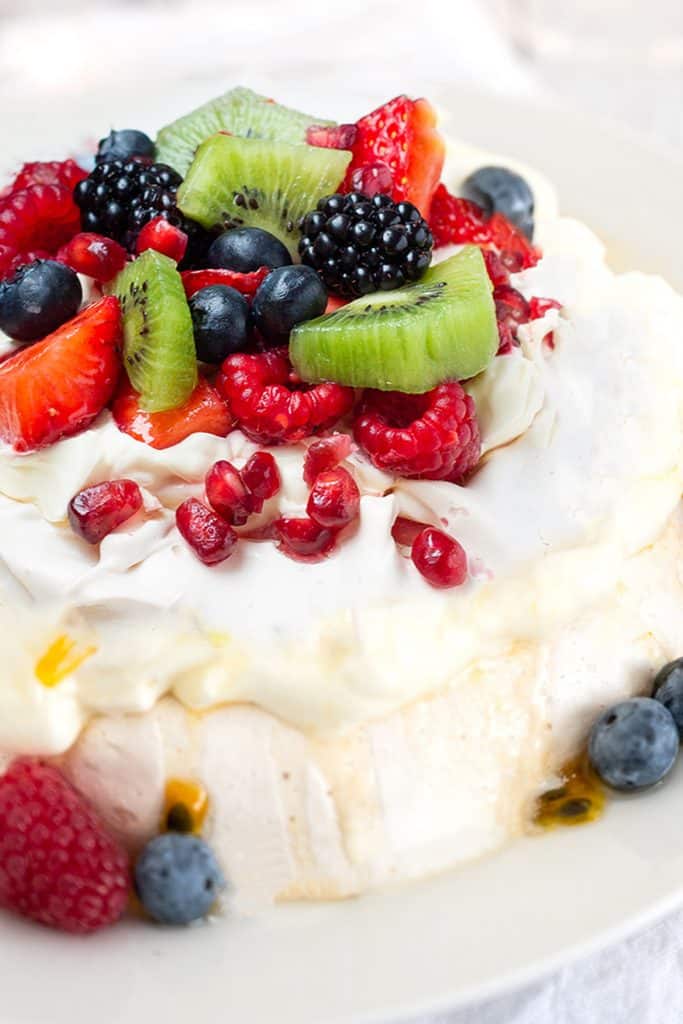
Because of its impressive appearance, you might think that pavlova is difficult to make, but you’d be wrong! It only takes a handful of ingredients to make and the meringue base can be baked in advance, leaving just whipping the cream and preparing the fruit for the topping before serving.
Decorating is also quite simple as more often than not, pavlova’s shape is quite rustic and a few cracks are unavoidable, but these imperfections are very beautiful and all part of its appeal.
Why This Recipe Works
- Cornstarch and vinegar in the meringue base, helps to create a marshmallowy center with a slight chew where it meets the crispy edge.
- A generous amount of sugar helps to create a crisp exterior.
- Fresh Fruit and Whipped cream balance the sweetness of the meringue and creates a lovely presentation of bright colors.
What is Pavlova?
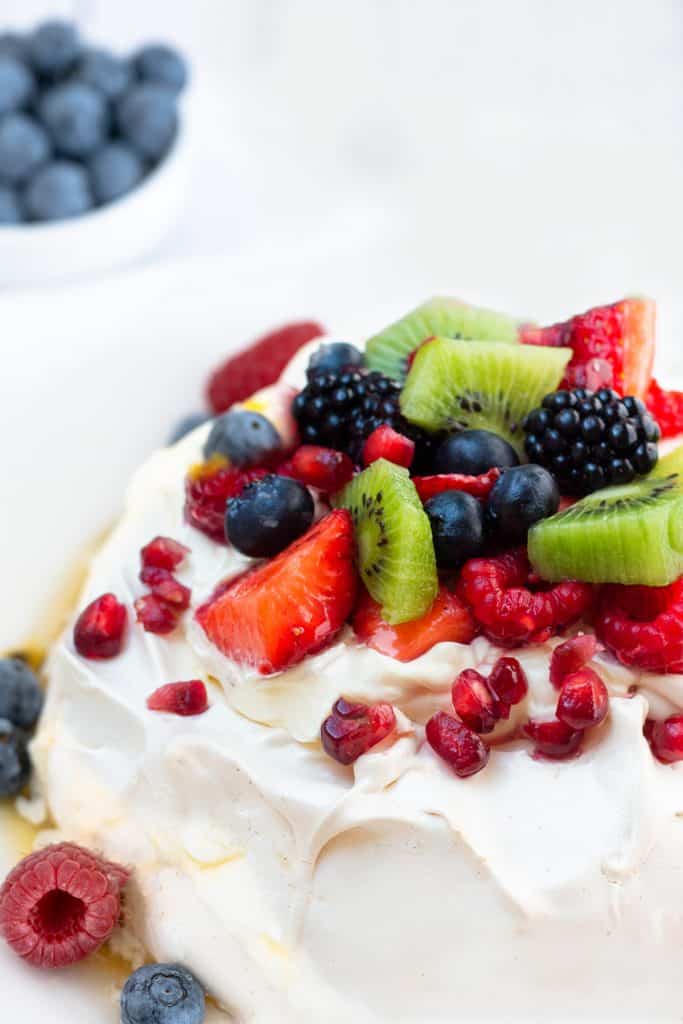
Pavlova is a dessert that’s prevalent in Australia and New Zealand. It has a base made from egg whites and sugar (similar to Meringue cookies with a softer middle) and it’s served topped with whipped cream and fresh fruit.
Ingredient Notes
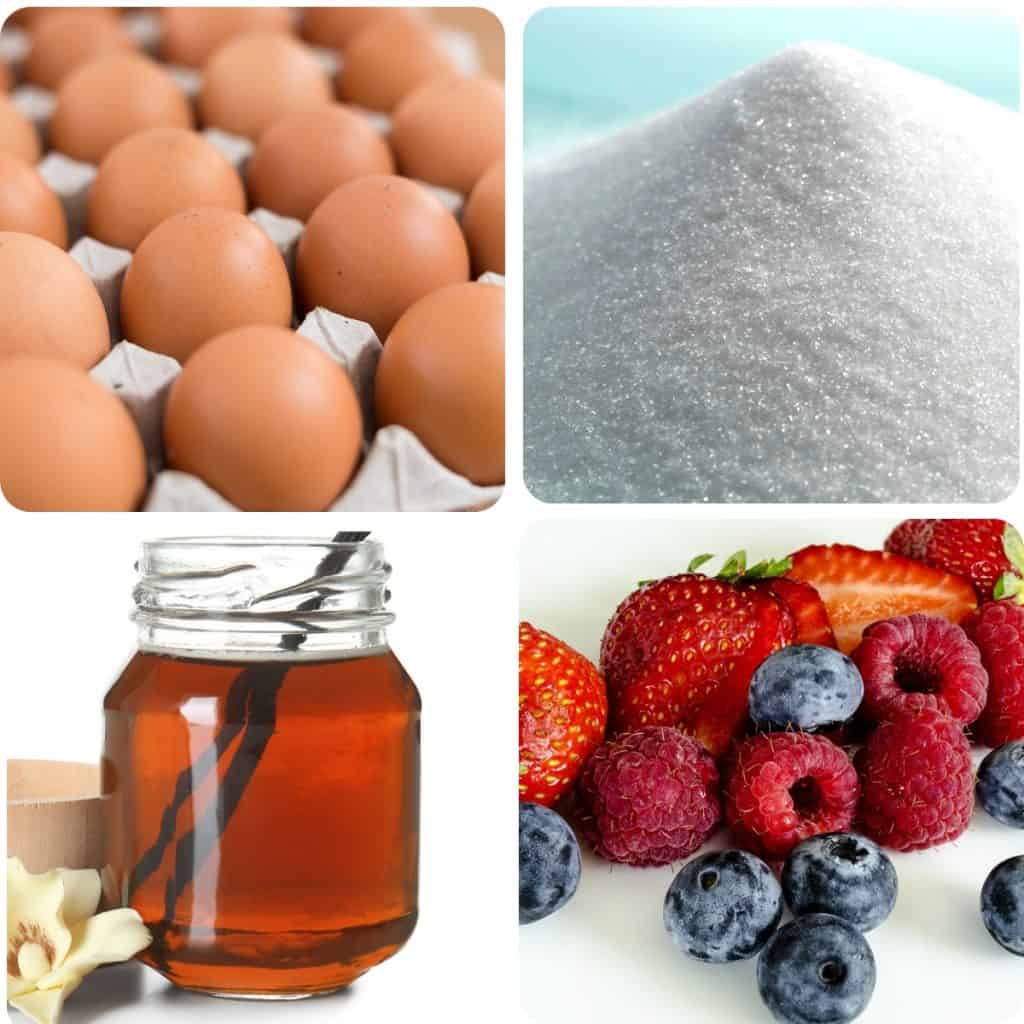
- Eggs – It’s best to use eggs that aren’t too fresh as older eggs fluff up better. Using week old eggs is a good rule of thumb. Just be sure to check the date on the carton when you buy them and plan accordingly.
- Sugar – I use super fine (aka caster sugar) as it dissolves easier, but granulated will work too.
- Vanilla – Use extract as the speckles from vanilla bean will show through on the base.
- Vinegar – white or apple cider vinegar are both good choices or you can use lemon juice as an alternative.
- Whipped cream – I use my stabilized whipped cream as I find it has good structure and doesn’t flatten out like store-bought will. If you use store bought, I suggest assembling right before serving.
- Fruit – Berries and tropical fruits such as kiwi and passion fruit are good choices as they’re not too sweet when paired with the meringue.
The Difference Between Meringue and Pavlova
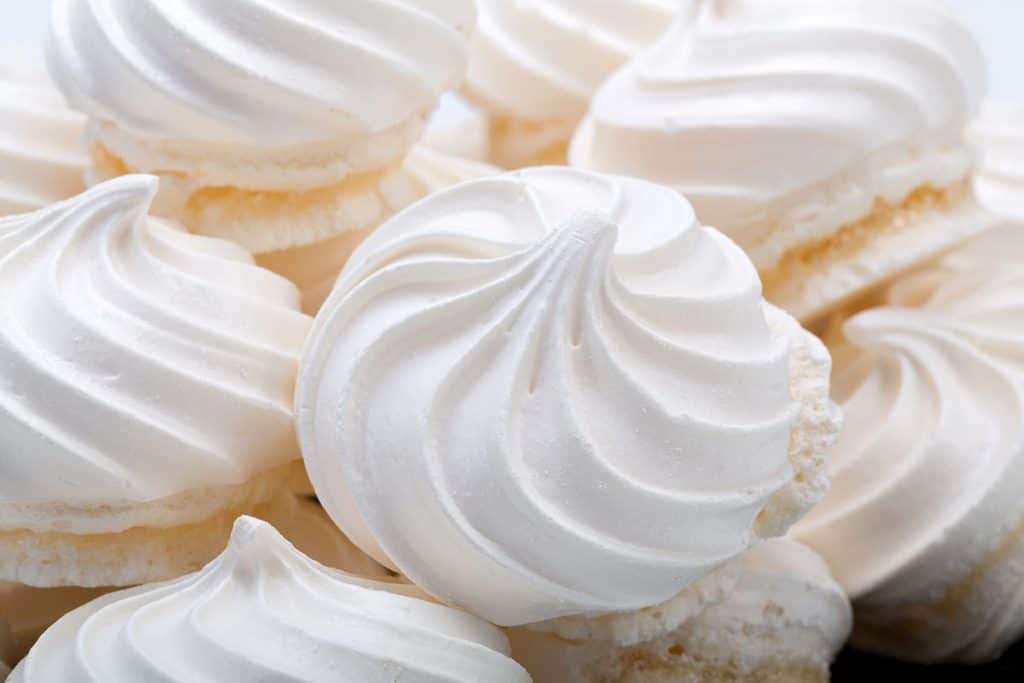
Meringue cookies are dry and crunchy inside and out, while the meringue used in pavlova has a variety of textures with a crisp outer shell, marshmallow like interior, and a lovely chew where the two textures meet. With Pavlova, the sweetness of the meringue is balanced by the tartness of fresh fruit and cool whipped cream.
How To Make Pavlova (Step By Step Instructions)
Start with making the meringue by whipping raw egg whites and sugar to stiff peaks.
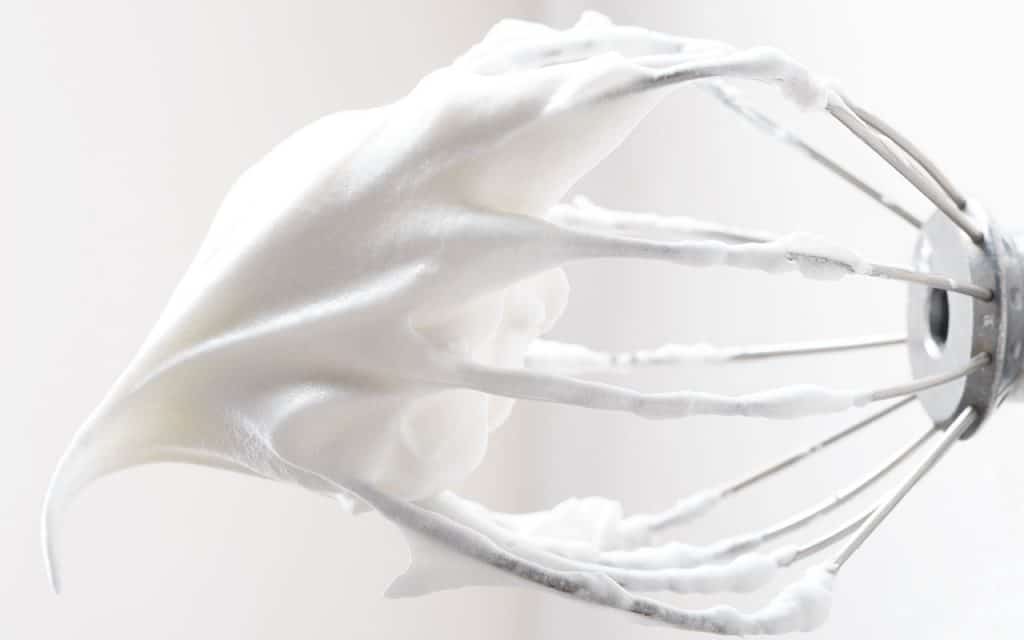
Fold cornstarch into the mixture with the vinegar and vanilla.
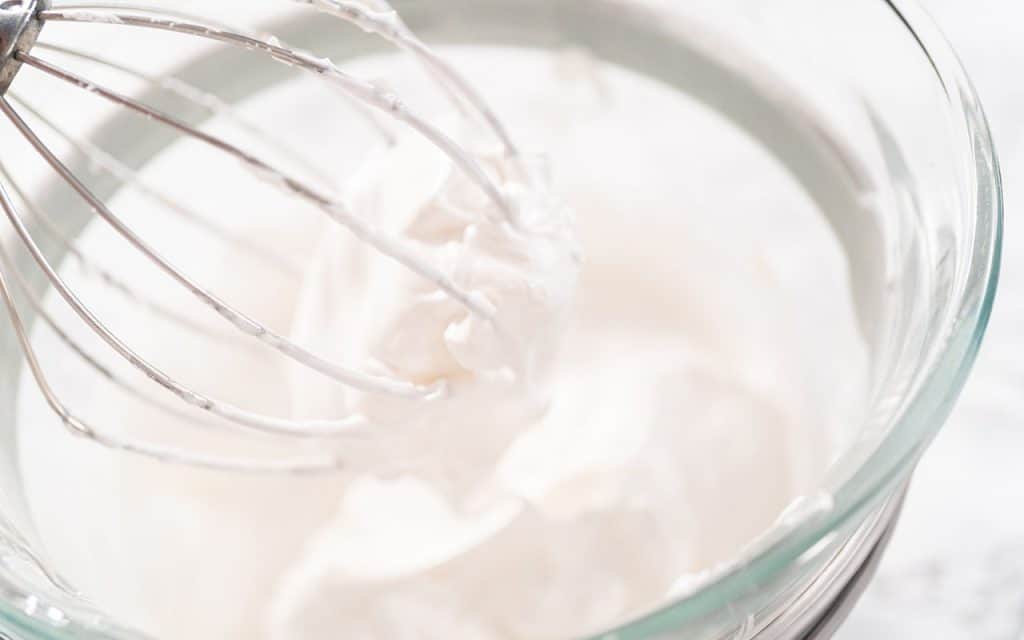
Draw a template for the meringues using using a pencil and a dessert plate on the baking paper.
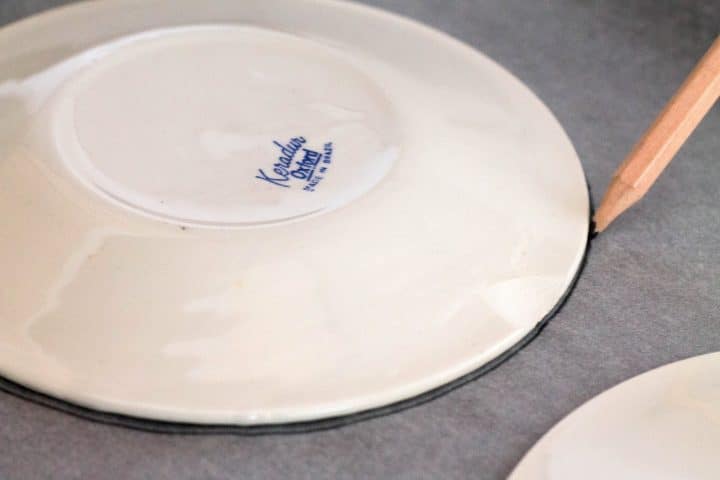
Then turn it over so it doesn’t bake on the pencil side.
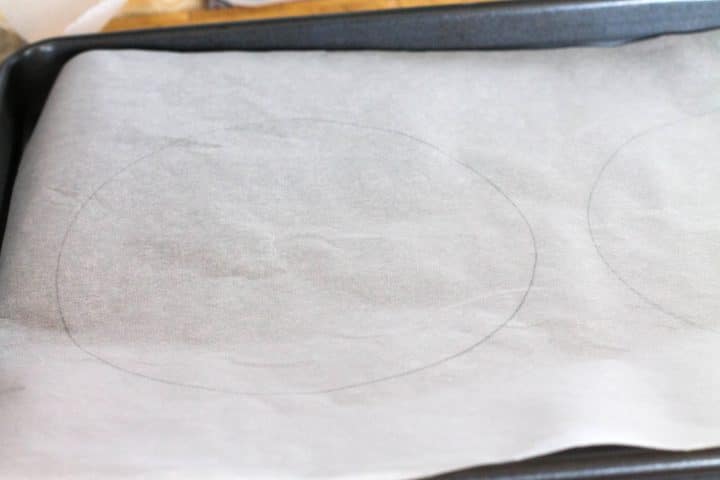
Spread the meringue onto the template making a crater in the middle.
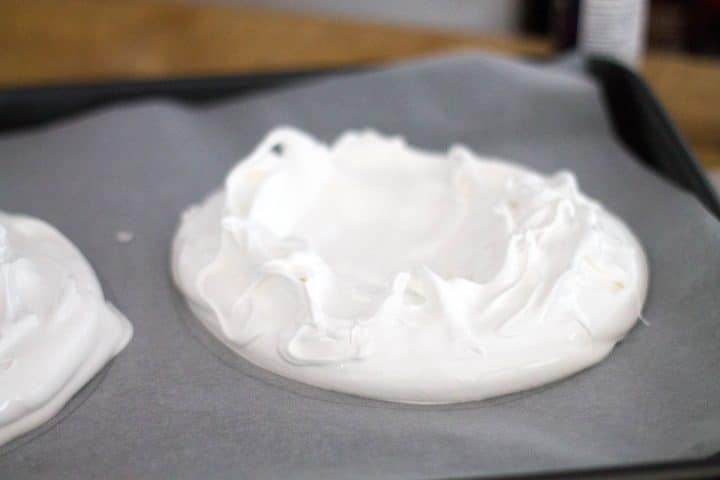
Bake in a low, cool oven until the outside is crisp. Then the oven is turned off, and the meringue is left to cool and dry out until the inside soft, but no longer wet.
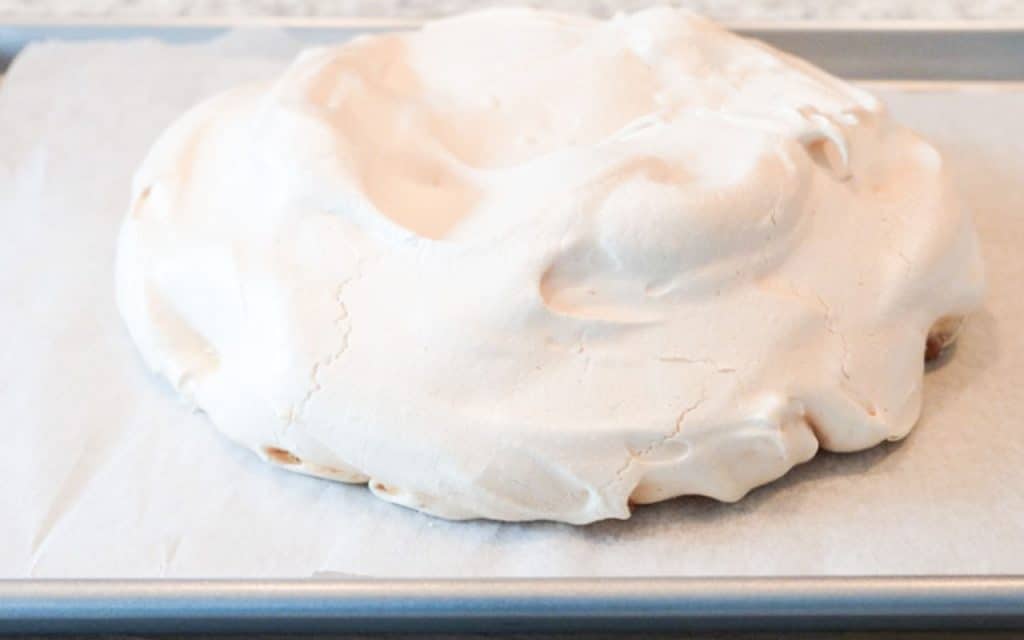
Fill with whipped cream (You can use my recipe for homemade whipped cream).
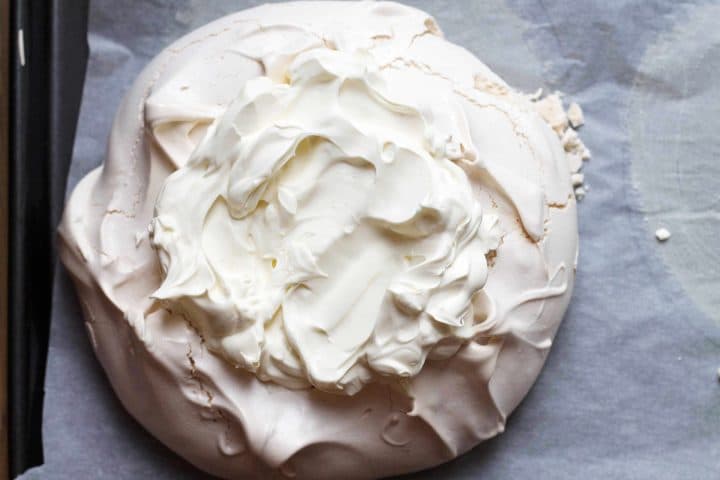
Top with fresh fruit before serving.
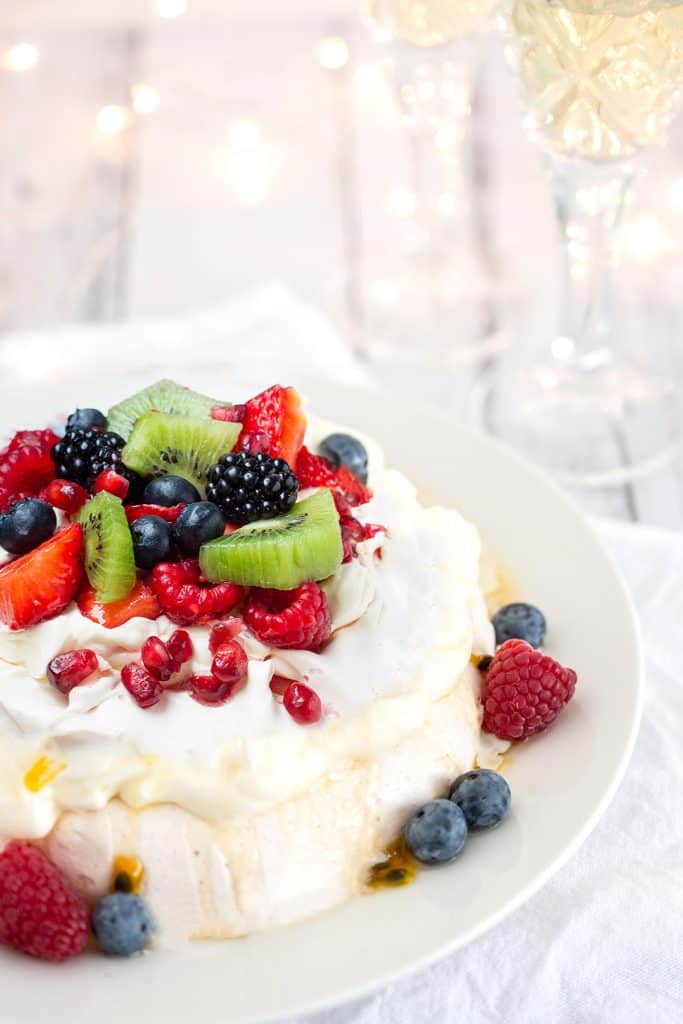
Make ahead and Storing Instructions ?
- Make Ahead: If you plan to make it ahead, make the meringues and don’t fill them until you plan to serve them. They will keep (unfilled) for a up to 2 days in a well-sealed container.
- You can leave them to cool overnight in the oven if needed.
- In the Fridge: Once filled, you can store them in the fridge for up to 3 days.
- In the Freezer: You can freeze the pavlova base (wrapped and stored in freezer safe container) for up to three months. All other elements to the pavlova should be frozen separately.
Tips & Variations
- Room temperature eggs are better for making pavlova. Remove the eggs from the fridge for up to an hour before making.
- It is best to separate the eggs when cold so do this then allow them to come to room temperature before beginning.
- To check your pavlova is ready, it should look pale and dry. Try inserting a skewer into the meringue, it should come out with a thick and sticky marshmallowy texture.
- Stack Pavlova with cream and fruit in between layers for a cake-like dessert.
- Add fruit puree with the meringue before baking for extra flavor.
Other Great Recipes
FAQs
You can make a pavlova the day before, just keep in an airtight container in the fridge for up to two days.
Both use egg whites to be whipped into a foam, with sugar and are baked at a low temperature until dry. However, meringue is crispy and dry all the way through and pavlova is crispy on the outside and soft and marshmallow-like in middle (and usually served topped with fruit and cream).
You can use mascarpone as an alternative to cream. If the mascarpone is firm stir in a splash of milk until it is at spreading consistency.
Yes you can leave the meringue in the oven overnight, then take out when ready to serve.
Did you make this?
Stay Updated
Receive new recipes & dinner ideas straight to your inbox!
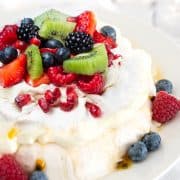
Let’s Make Pavlova
Ingredients
- 4 egg whites
- 1¼ cups superfine sugar
- 1 tablespoon white wine vinegar
- 1 tablespoon cornstarch
- 1½ teaspoons vanilla extract
For the fruit:
- 2 cups mixed fruit of your choice
- 2 tablespoons water
- 2-4 tablespoons caster/superfine sugar to taste
For the cream:
- 1¼ cup whipping cream
- 6-8 tablespoons powdered sugar
- 1 teaspoons vanilla extract
- 1 tablespoon skimmed milk powder
Equipment Needed
- parchment paper
- pencil
Instructions
- Preheat the oven to 300F/150C
- Using a pencil, mark out the circumference of two dessert plates on parchment paper (about 3 inches apart from each other) for two Pavlovas or a dinner plate for one Pavlova. Flip the paper over so you are baking on the side without the pencil marks. You can see the circles through the paper.
- Whisk the egg whites with a mixer until they form stiff peaks, then whisk in the sugar, 1 tablespoon at a time, until the meringue looks glossy.
- Whisk in the vinegar, cornstarch, and vanilla.
- Spread the meringue inside the circles, creating a crater in the middle by making the sides a higher than the middle.
- Bake for 1 hour, then turn off the oven and let the Pavlova cool completely inside the oven (they can even be left overnight)
For the fruit:
- When the meringue is cool, peel and cut the fruit (if needed). Add it to a medium bowl then add the water and sugar and mix to create juices.
For the cream:
- Add powdered sugar (to taste), skimmed milk powder (This is to help give the whipped cream structure so it doesn’t flatten out too quickly), and vanilla to the cream.
- Using a food processor, whip the cream until it thickens (this doesn’t take long at all so check often).
- Spread half of the whipped cream into the craters of each Pavlova and do the same with the fruit.
- My Pavlovas lasted two days in the fridge before going soft. However, each environment is different, so I recommend serving on the day of the assembly.
Update Notes: This post was originally published in July of 2015, but was republished with new photos, step by step instructions and tips in July of 2021.
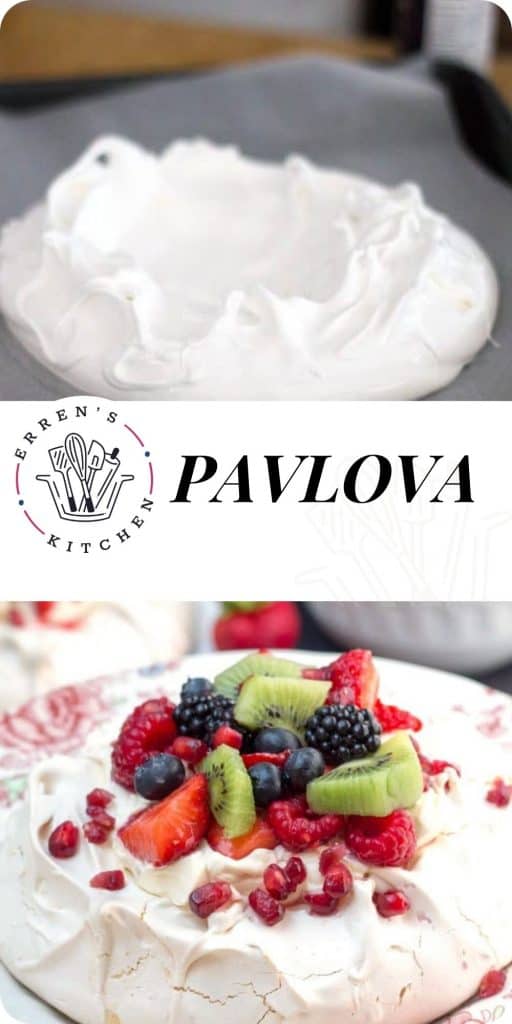
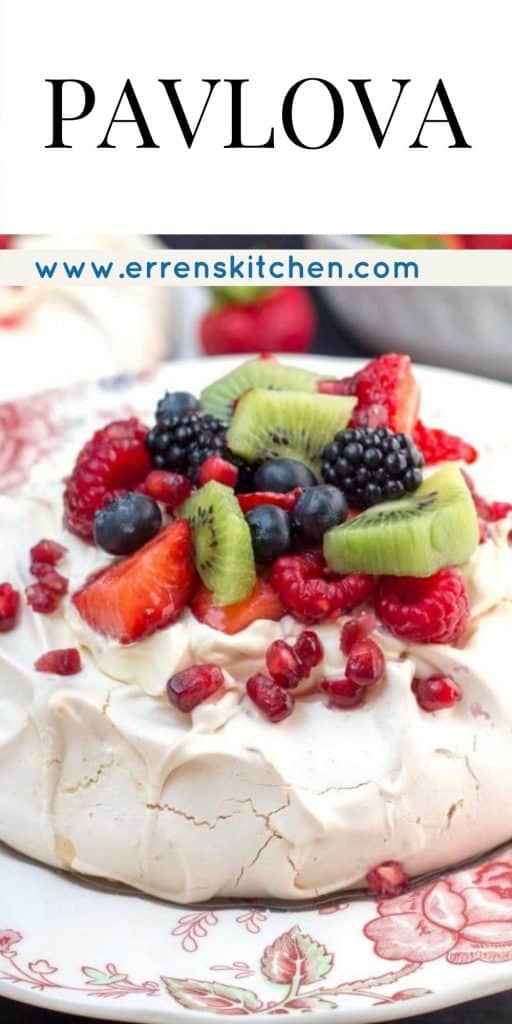
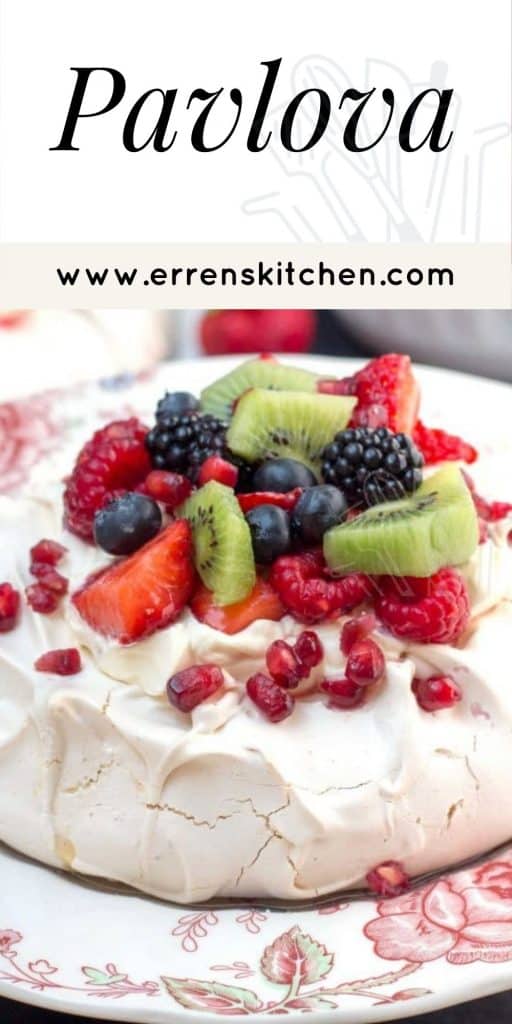







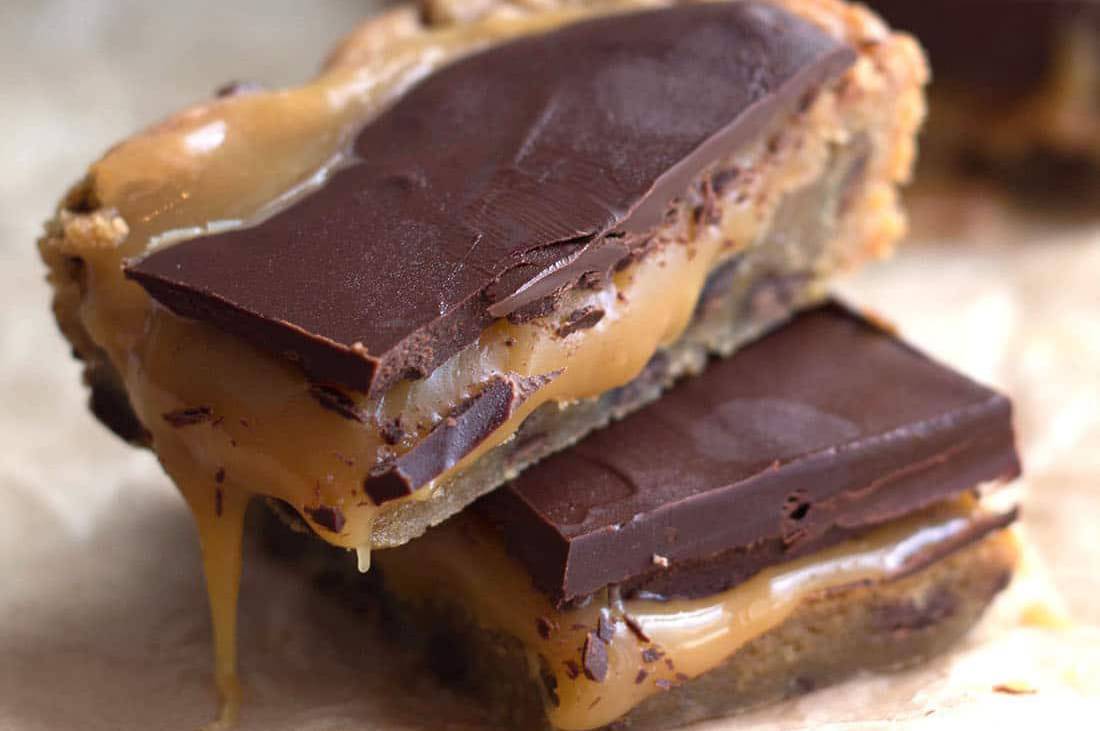
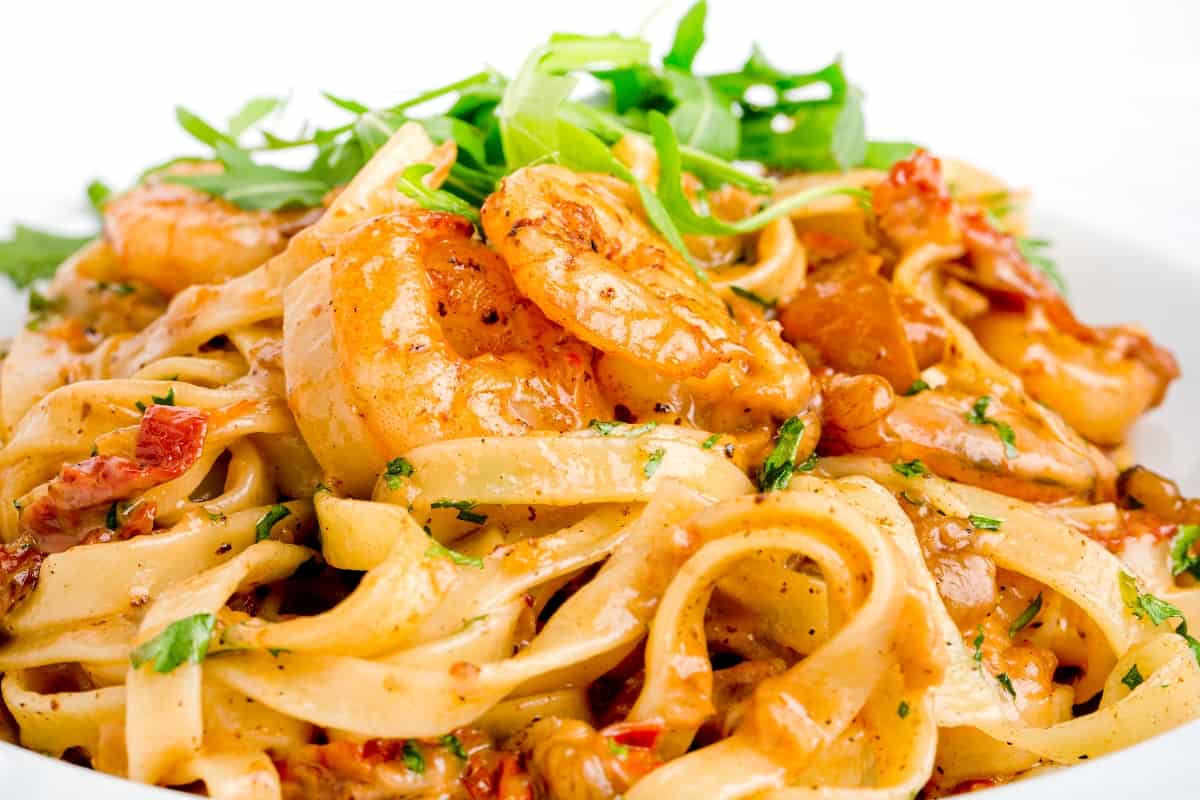

Erren Hart says
Yay! I’m so happy when people take the time to share their experience!
Erren Hart says
So glad you enjoyed it! Thanks for stopping by and sharing! 🙂
Allison says
Very time consuming but worth the effort
Erren's Kitchen says
Thank you Alison 🙂